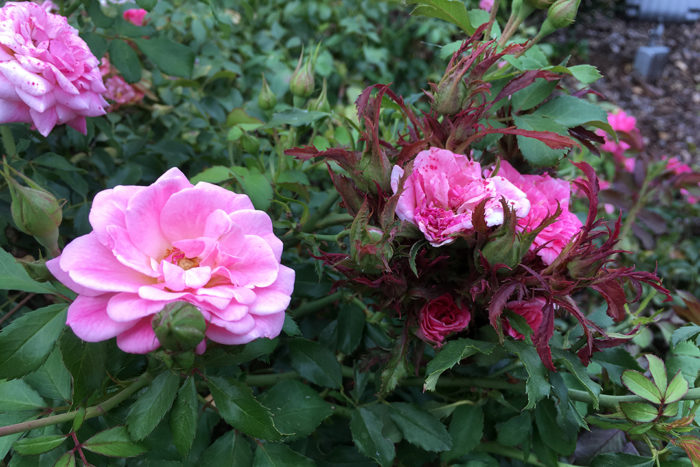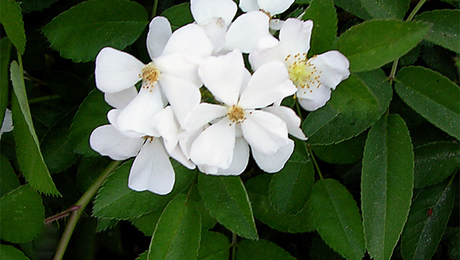
Roses (Rosa spp. and cvs., Zones 3-9)might be a candidate for the favorite plant of people who don’t garden. The last interaction with a rose most of these people had was in long-stem form accompanying chocolates. But those are not the roses most gardeners interact with in the South. Sure, there are die-hard hybrid tea rose gardeners fighting the good fight in their gardens. However, all the most popular roses of the last decade are shrub roses. Shrub roses tend to be lower maintenance and fast growing and to have long-lasting flower power. Gardeners’ desires have trended toward shrub roses because of these traits. So the story goes on, with many gardeners still very interested in what many consider the queen of the garden.
Most good stories have an antagonist, however, and for roses in general that foe is rose rosette disease (RRD). Many of the other pests and diseases of roses can be controlled through a variety of means—but not RRD. If you have been gardening for a while, it is likely you have heard of RRD. If you’re new to getting sweaty and dirty for pleasure (I mean gardening), you may have seen its symptoms on the roses in front of your favorite donut shop. It truly is everywhere.
How do I know if I have it?
Flushes of bright red growth, overly thorny stems, and clusters of unique growth are the visual symptoms of RRD. After the first appearance of the disease, roses will decline slowly before dying, typically within three years.

How can I control rose rosette disease?
Currently, RRD cannot be reasonably controlled or prevented in a traditional home garden. It is a virus spread by a wind-transported eriophyid mite. Even with your best reading glasses, you can’t see the mite; its size is right at the threshold of what the human eye can see without magnification. If you gaze at it under a microscope, it looks like a cross between a carrot and a slug. The virus and the infecting mite cannot survive in the absence of a rose. This means you can replace a diseased plant with another rose as long as there are no other diseased roses in the area.
How do I get rid of rose rosette disease?
RRD is widespread, and basically every garden rose is a candidate. The most popular roses in the United States, the Knockout® Family of Roses, is often written about as being more susceptible to RRD than other garden roses. This is not the case, and RRD is really a very equal-opportunity disease of roses. If symptoms of RRD appear in your garden, the best solution is to dig it, bag it, and get it out of your garden—period.
Is rose rosette disease bad enough that you should stop growing roses?
I would say not by a long shot. Those of us who enjoy roses in our back yard for the pleasure of their long-lasting beauty still have a lot to look forward to. Because roses in general are so quick to establish and bring beauty to the garden, they should not be avoided. We should just stop looking at them as something that will last for 50 years. You can easily establish and get a lot of enjoyment out of a rose even if it’s in your garden for less than seven years. Most important, knowing the visual signs of RRD and having a willingness to remove diseased roses from your garden will help slow the spread of the disease in general.
Andy Pulte is a faculty member in the plant sciences department at the University of Tennessee.


















Comments
Log in or create an account to post a comment.
Sign up Log in